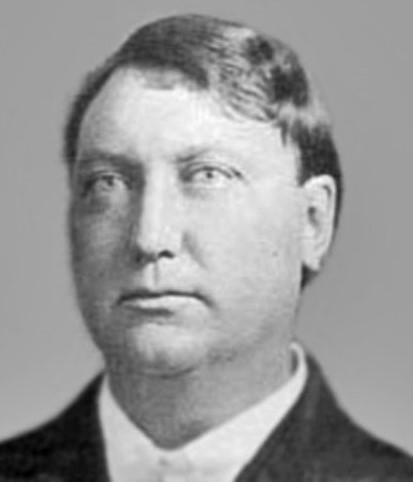By David Roddy
 |
| Idaho governor Frank Steunenberg |
Other townspeople rushed towards the blast, which shattered all the windows of his house facing the street. Lying face down by the gate, amongst broken glass, splintered wood, and singed cloth, they found the governor. He was naked, as the explosion had burned his clothes away but for a few singed rags. Red pulp hung from his thighs, and chunks of his obliterated legs lay strewn around him.
“Who shot me?” he murmured to the growing crowd around him, before telling them to turn him over. Twenty minutes later, he was dead.
The use of dynamite in the assassination of Steunenberg made members of the Western Federation of Miners law enforcement’s primary suspects. Six years earlier, during his governorship, miners affiliated with the union used dynamite to blow up the Bunker Hill mine. It was one of the only non-union mine in the Coeur d’Alene district, and the mine operators kept the wages the lowest in the region. Mine superintendent Albert Burch infiltrated any miner’s organization with Pinkerton detectives, and fired any workers he believed to be union members.
 |
| Bunker Hill Mine after explosion. |
Governor Steunenberg, fearing an insurrection, asked President McKinley to dispatch the National Guard to Coeur d’Alene, and the troops proceeded to arrest miners in the towns of Wardner (the location of the Bunker Hill Mine) and Kellogg suspected of involvement, as well as every man in the town of Burke, where the train was first commandeered. Journalist J. Anthony Lukas, in his book on the unrest, writes:
“They arrested every male: miners, bartenders, a doctor, a preacher, even the postmaster and the school superintendent…Miners were seized as they came off their shifts, cooks and waiters arrested in the kitchens, diners at their supper table.”The troops first held the men in a barn, but when the number of prisoners swelled to 1,000, they transferred them to a specially made bullpen. Conditions in the pen were miserable, and three men died from neglect. As the state began the process of prosecution, Lukas notes:
“In 1899, when the state needed money for the Coeur d'Alene prosecutions, the Mine Owners' Association had come up with $32,000—about a third of it from Bunker Hill and Sullivan—handing $25,000 over to Governor Steunenberg for use at his discretion in the prosecution.”The acceptance of Mine Owner Association money as well as the oppressive use of force by Federal troops cast an unwelcome light on Steunenberg. He had run on a pro-labor, Populist Party ticket, and many labor supporters accused him of betraying his stated principles. The repression entered the political realm, and Populist Party officials sympathetic to the union were also arrested. Martial law was still in place as his second term in office ended, and he opted out of running again.
 |
| Captured miners in bullpen, Idaho 1905 |
References:
Lukas, J. Anthony. Big Trouble: a Murder in a Small Western Town Sets off a Struggle for the Soul of America. New York, NY: Simon & Schuster, 1997.
"Ex-Governor Killed by Dynamite Bomb." New York Times, 31 Dec. 1905.
Images from University of Idaho special collections and wikimedia commons.
No comments:
Post a Comment